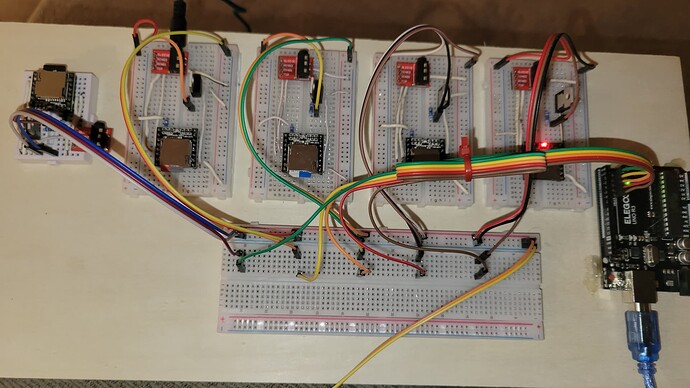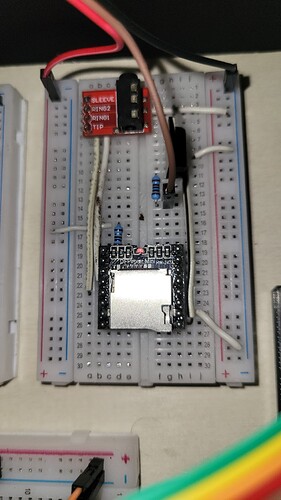Hello,
Recently I created a board with multiple DF players to output separate audio sources to designated speakers. Unfortunately, I'm running into a problem with playback on these boards. I have wired the boards as shown in the pictures. I am making use of the IO pin, which is supposed to trigger either the previous audio file or the next audio file. However, the DF player seems to be completely ignoring this, and instead plays the smallest or largest audio file first, and ignores the order of the files on the SD card. I have them labeled as follows: 00x.mp3, and have tried changing the format several times to include numbered folders, more leading zeros, and anything else I could find on existing tutorials for the DF player. Changing the format made no difference.
Has anyone else run into this problem? I am unable to make my DF player play the audio files in order of their file names, even though I am using the IO pin, and not the ADKEY pin.
Here is where my issue gets even weirder, though. I originally had the negative side of my 5v power supply connected to the ground on my Arduino board, and the largest audio file would play first. When I removed the connection to ground from my board, the trigger would still activate, but it would instead play the smallest audio file first. Apart from this odd flip-flop, I was very surprised that the digital OUT from my Arduino board was still able to activate the transistor, given that there was no completion of the circuit via ground to the Arduino board. This entire situation has completely confused me, and I'm hoping someone with more experience can identify the problem, as well as provide some insight on how my digital OUT pins are still able to saturate the transistor despite the absence of a pathway to ground on the Arduino.
To further help with the troubleshooting process, here is a description of the DF player breadboards:
-Positive 5v on the far left side, with negative 5v on the far right
-Transistor wired to close connection to negative 5v when saturated. Base connected to Arduino digital OUT with 10kohm resistor, collector connected to IO2, emitter connected to 5v negative.
-DF player mini connected directly to 5v negative
-DF player mini connected to 5v positive with 20ohm resistor
-3.5mm audio jack wired to DAC_R & L pins, also connected to 5v negative
-All DF player breadboards are connected to the large breadboard at the bottom for power distribution. The 5v power supply cables are the orange and yellow jumper cables connected on the far right.
If you have read up to this point, I really appreciate your help, thanks!


